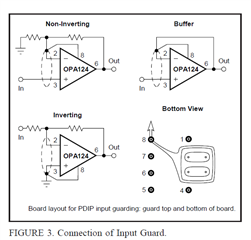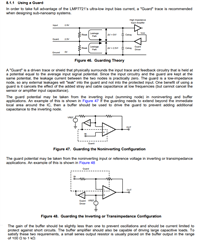I have a customer that had used OPA124 in a previous design.
They are looking at the OPA140AID as a possible replacement. One significant difference between the two is that the OPA124UA has a substrate pin (pin 8). According to the datasheet, it is supposed to be connected to a guard trace if there is one and to ground if there isn’t. In the customer's application, there is a guard trace. Do you know what the function of this “substrate” pin is? Does it somehow provide extra shielding? Why does the OPA140AID not have a substrate pin? Customer is trying to determine if Ithey need to do RF immunity testing when they convert over to the OPA140AID.
I've attached the OPA124 datasheet.



